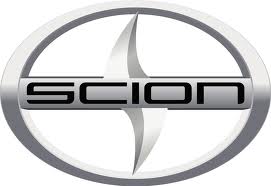xD L4-1.8L (2ZR-FE) (2008)
/Page-1511015.png)
NOTE: *: Before measuring the resistance, leave the vehicle as is for at least 1 minute and do not operate the engine switch, any other
switches, or the doors.
If the result is not as specified, the DLC3 may have a malfunction. Repair or replace the harness and connector.
(b) Connect the cable of Techstream to the DLC3, turn the engine switch on (IG) and attempt to use the tester. If the display indicates that a
communication error has occurred, there is a problem either with the vehicle or with the tester.
HINT:
-
If communication is normal when the tester is connected to another vehicle, inspect the DLC3 of the original vehicle.
-
If communication is still not possible when the tester is connected to another vehicle, the problem may be in the tester itself. Consult the
Service Department listed in the tester's instruction manual.
How to Proceed With Troubleshooting
INTRODUCTION: HOW TO TROUBLESHOOT ECU CONTROLLED SYSTEMS: HOW TO PROCEED WITH TROUBLESHOOTING
HOW TO PROCEED WITH TROUBLESHOOTING
1. OPERATION FLOW
HINT: Perform troubleshooting in accordance with the procedures below. The following is an outline of basic troubleshooting procedures.
Confirm the troubleshooting procedures for the circuit you are working on before beginning troubleshooting.
1. VEHICLE BROUGHT TO WORKSHOP
NEXT -- Continue to next step.
2. CUSTOMER PROBLEM ANALYSIS
(a) Ask the customer about the conditions and environment when the problem occurred.
NEXT -- Continue to next step.
3. INSPECT BATTERY VOLTAGE
Standard voltage:
11 to 14 V
If the voltage is below 11 V, recharge or replace the battery before proceeding.
NEXT -- Continue to next step.
4. SYMPTOM CONFIRMATION AND DTC (AND FREEZE FRAME DATA) CHECK
(a) Visually check the wire harnesses, connectors and fuses for open and short circuits.
(b) Warm up the engine to the normal operating temperature.
(c) Confirm the problem symptoms and conditions, and check for DTCs.
Result:
B -- Go to step 6
A -- Continue to next step.
5. DTC CHART
(a) Check the results obtained in the DTC check. Then find the output DTC in the DTC chart. Look at the "Trouble Area" column for a list of
potentially malfunctioning circuits and / or parts.
NEXT -- Go to step 7
6. PROBLEM SYMPTOMS TABLE
(a) Check the results obtained in the symptom confirmation. Then find the problem symptoms in the problem symptoms table. Look at the
"Suspected Area" column for a list of potentially malfunctioning circuits and / or parts.
NEXT -- Continue to next step.
7. CIRCUIT INSPECTION OR PARTS INSPECTION
